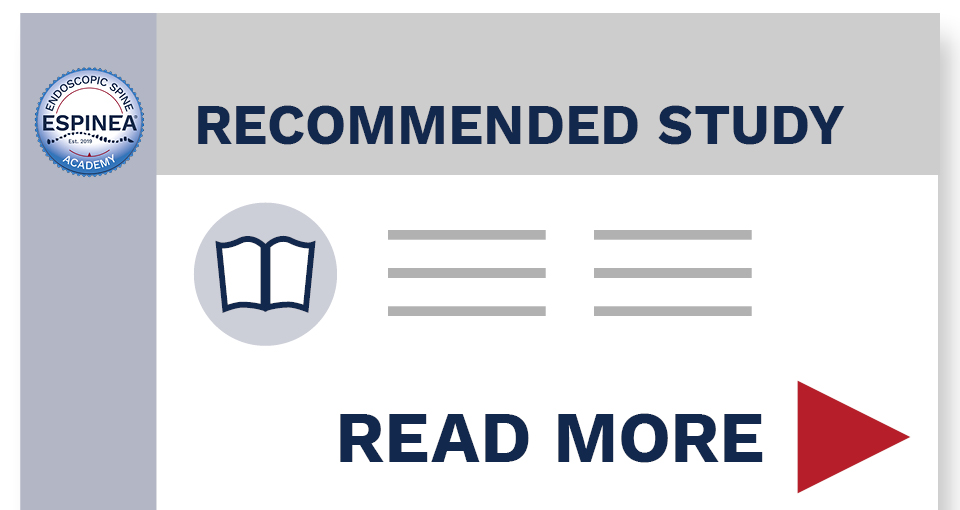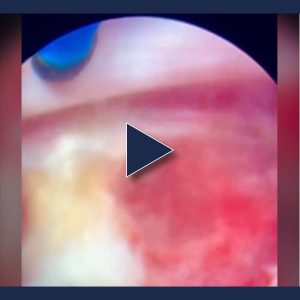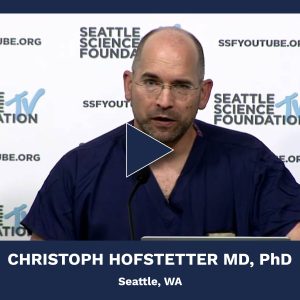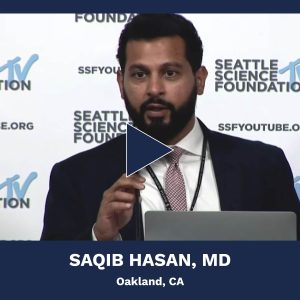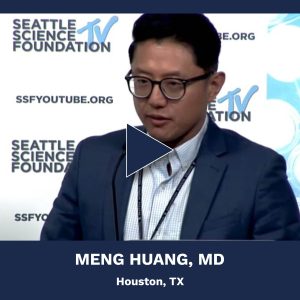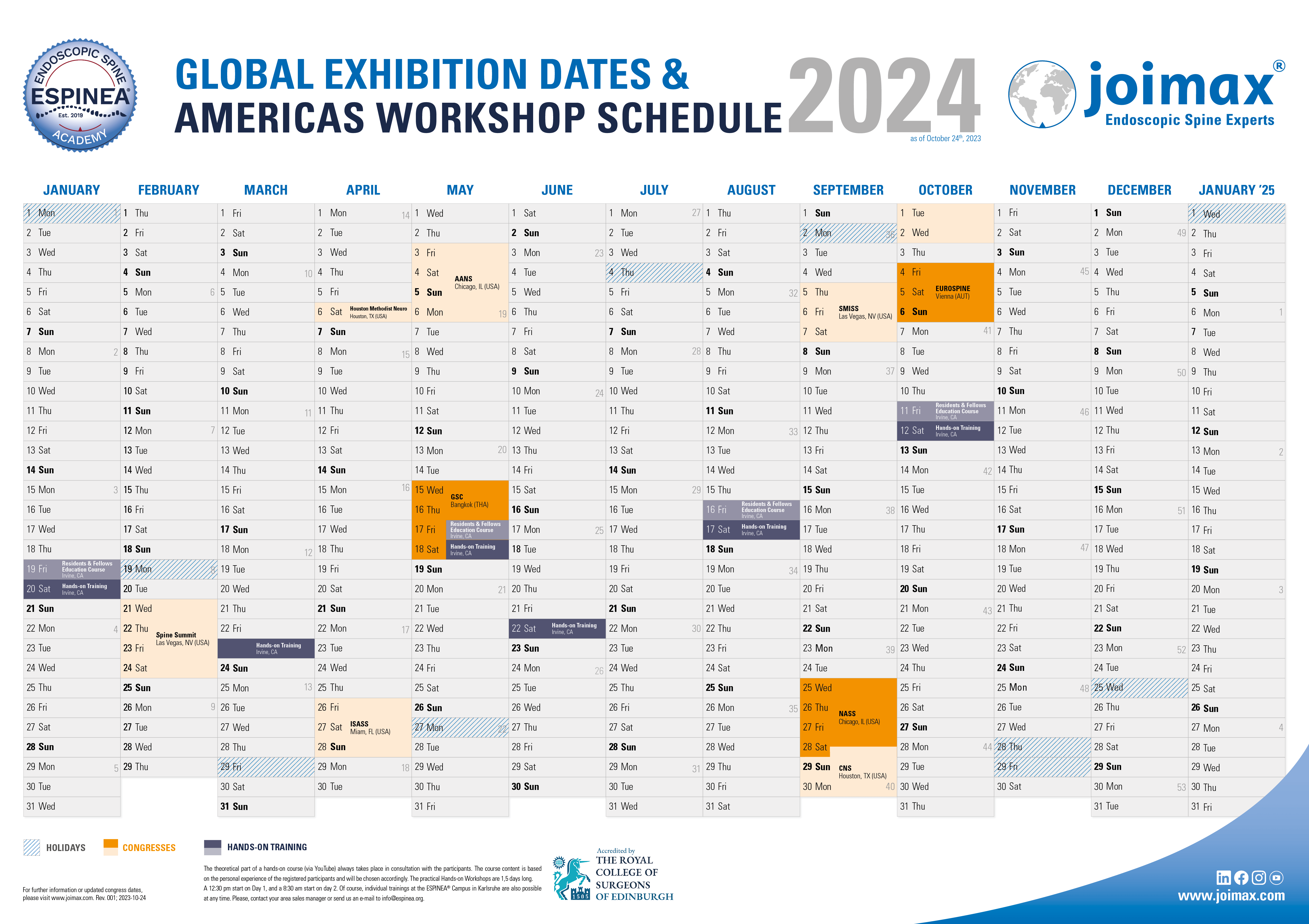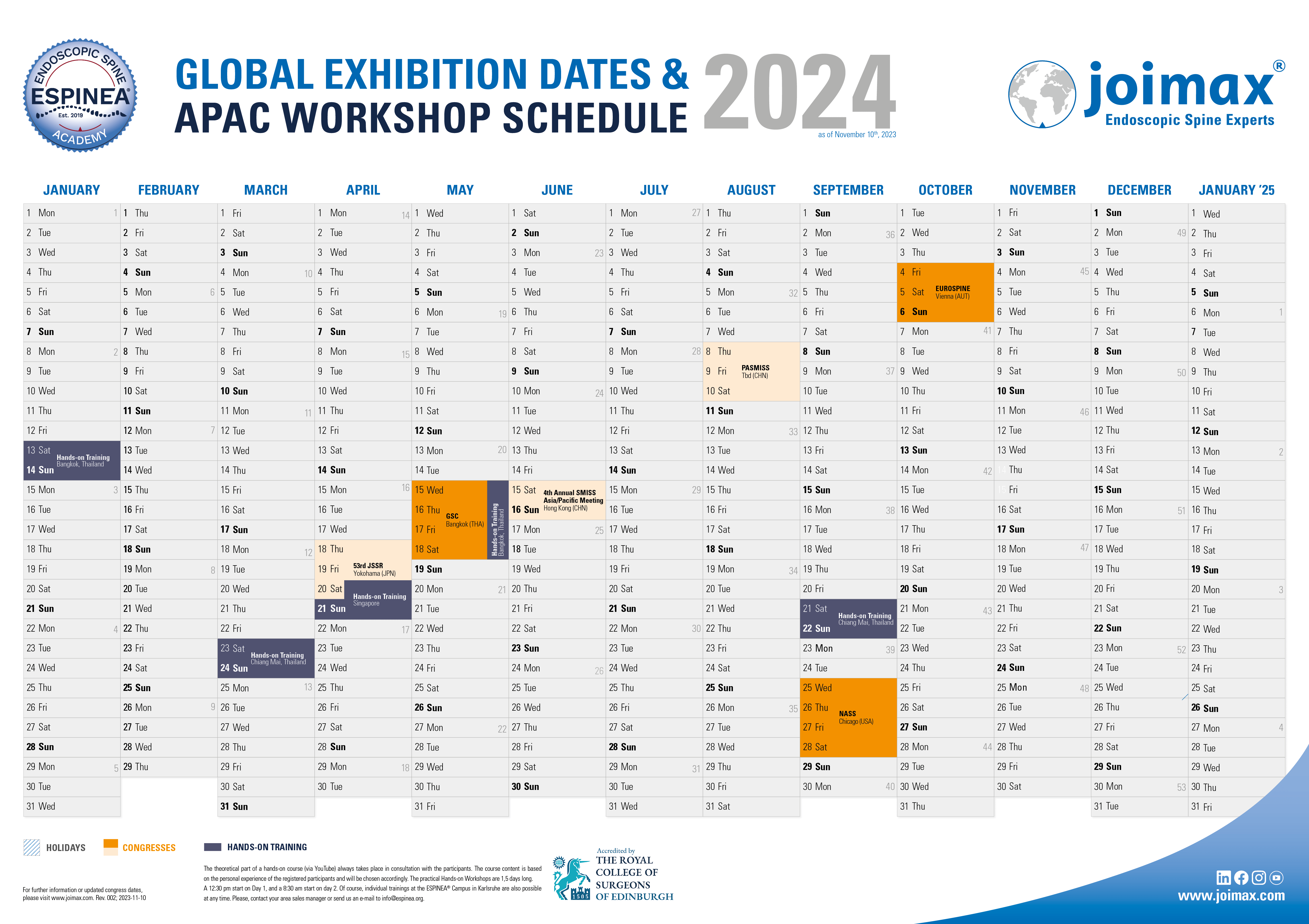Dear Reader,
The landscape of spine surgery has been redefined by advancements in technology and techniques aimed at improving patient outcomes and reducing complications. This pursuit has led to the emergence of Full-Endoscopic Spine Surgery (FESS), a revolutionary approach that promises enhanced benefits over conventional spine surgery. In spine surgery, complication management has always been a critical aspect of surgical practice, driving innovations that ensure patient safety and overall success. Traditional open spinal surgery techniques, while effective, are often associated with a higher incidence of complications due to their invasive nature. FESS, on the other hand, distinguishes itself with its ultra-minimally invasive approach, characterized by smaller incisions and precise visualization. This approach facilitates targeted preoperative planning and pathology-tailored approaches, resulting in reduced tissue trauma. These features contribute significantly to a lower rate of complications, promising quicker recovery and higher patient satisfaction. In this newsletter, we would like to draw your attention to two recently published articles which focus on the benefits of FESS in complication management, specifically its lower infection rates and effectiveness in repairing dural tears.
The first article, titled “Full-endoscopic spine surgery diminishes surgical site infections – a propensity score-matched analysis, focuses on the significantly reduced risk of surgical site infections (SSI) associated with FESS. SSI is one of the most frequent and costly complications following spinal surgery. In this research, a multicenter cohort study has been performed by a group of spine surgeons, including Mark A. Mahan, Tobias Prasse, Robert B. Kim, Sananthan Sivakanthan, Katherine A. Kelly, Osama N. Kashlan, Jan Bredow, Peer Eysel, Ralf Wagner, Albert E. Telfeian and Christoph Hofstetter, to examine the rate of SSIs in patients undergoing FESS and compare it to a matched cohort from the National Surgical Quality Improvement Program (NSQIP) database (database (see figure below for illustration).
1277 non-instrumented FESS cases between 2015 and 2021 were collected for analysis, while data of 55,882 patients was selected for the nonendoscopic NSQIP cohort. The results revealed that the SSI rate in endoscopic patients was significantly lower than in non-endoscopic patients (a 16-fold risk reduction), underscoring the superiority of FESS over traditional procedures.

Several factors likely contribute to the low infection rate in full-endoscopic surgeries,
- The volume of tissue disruption is limited when performing FESS. Minimizing tissue trauma by
reducing the extent of the surgical cavity is known to alleviate the risk for SSI in other surgical
fields; - Continuous irrigation of the surgical field with saline is a standardized part of FESS to
maintain clear vision and it might effectively lead to the distinct reduction of SSI by preventing
significant bacterial colonization. Notably, the surgeons in the FESS cohort did not utilize
antibiotic irrigation; - FESS is associated with minimal blood loss. Elevated blood loss has been associated with infection risk. In addition, clotted blood is a possible breeding ground for bacteria.
Furthermore, the authors of this study have not only analyzed the complication rates but also
innovated new techniques for complication management in FESS. For instance, the article titled “Incidence and management of dural tears in full‑endoscopic unilateral laminotomies for bilateral lumbar decompression” by Madeline E. Greil, Julia Bergquist, Osama N. Kashlan, Woo-Keun Kwon, Sharon Durfy and Christoph P. Hofstetter, explores FESS’s ability to effectively repair dural tears. Intraoperative dural tears, a commonly reported complication of spine surgery, can lead to cerebrospinal fluid leaks and subsequent infections. In open procedures, primary repair of incidental durotomies is frequently performed.
However, in FESS, given the small diameter of the working channel and single portal, primary repair can be challenging without converting to an open procedure. In this article, an innovative method for bimanual intraoperative endoscopic dural repair is described, and its efficacy in repairing dural lacerations in interlaminar LE-ULBD cases is demonstrated.
Overall, FESS marks a paradigm shift in the field of spinal surgery. With its advanced visualization and fully specialized instrumentation, FESS not only offers a lower complication rate compared to traditional procedures but also demonstrates significant advantages in terms of lowe infection rates and the effective repair of dural tears. These two publications underscore the immense potential of FESS in improving patient safety and surgical outcomes, aligning with the broader healthcare goal of minimizing the burden of post-operative complications.
Dr. Jing Hu
Head of Clinical Research
Literature
Further Reading
Full-endoscopic spine surgery diminishes surgical site infections“ a propensity score- matched analysis. Mahan MA, Prasse T, Kim RB, Sivakanthan S, Kelly KA, Kashlan ON, Bredow J, Eysel P, Wagner R, Bajaj A, Telfeian AE, Hofstetter CP. The Spine Journal 2023. doi: 10.1016/j.spinee.2023.01.009.
Incidence and management of dural tears in full-endoscopic unilateral laminotomies for bilateral lumbar decompression.
Greil ME, Bergquist J, Kashlan ON, Kwon W-K, Durfy S, Hofstetter CP. Eur Spine J 2023. doi: 10.1007/s00586-023-07749-7.
VIDEO HIGHLIGHTS
VIDEO HIGHLIGHTS
Take a look at our selection of the latest and best video highlights in the field of endoscopic spine surgery!
“Spontaneous #CSF leak?” by Sanjay Konakondla, MD shows the ventral dural defect.
Studying the Power of Endoscopic Spine Surgery – Christoph Hofstetter MD, PhD
In his talk at the Seattle Science Foundation, Christoph Hofstetter, M.D., Ph.D discusses the power of endoscopic spine surgery, highlights the benefits of the SPINEHealthie smartphone app that connects patients and surgeons, and introduces the Endoscopic Spine Research Group.
Benefit Zone of Endoscopic Spine Surgery –
Saqib Hasan, MD
In his inspirational talk on the Seattle Science Foundation, Saqib Hasan, M.D. takes the audience from the history of surgery to the current full-endoscopic spine surgery, a revolution in surgery.
Nuances of Discectomy Approach Selection –
Meng Huang, MD
The main focus of the presentation held by Meng Huang, MD in the Seattle Science Foundation is to explore in depth the intricacies of selecting the most appropriate approach for discectomy.
Endoscopic Spine Surgery How It Started & Where We Are Now – Prof J. N. Alastair Gibson
Using numerous published papers and cases, J.N. Alastair Gibson discusses the following topics in the Seattle Science Foundation segment: Why endoscopy? How did it begin? How far have we come today? The comparison between transforaminal discectomy and microdiscectomy, transforaminal and interlaminar approaches, the importance of good equipment, and many other interesting topics.
EDUCATIONAL ACTIVITIES
3 E.A.S.Y Steps: Transforaminal Docking
Did you ever wonder if there is a quick and easy way to perform a transforaminal docking?
Check out “3 E.A.S.Y Steps: Transforaminal Docking” by Sanjay Konakondla, MD.
Here, Board Certified Neurosurgeon Sanjay Konakondla, MD, provides excellent graphics and procedures that are both didactic and instructional while explaining how to carry out the technique.





WORKSHOPS
WORKSHOPS
Take a look at our selection of the latest and best video highlights in the field of endoscopic spine surgery!
If you want to move to the next level in your endoscopic knowledge, ask us about advanced or expert level workshops.
These customized hands-on events are tailored to your preferred area of focus.
Work with one of our experienced instructors and shorten your learning curve.
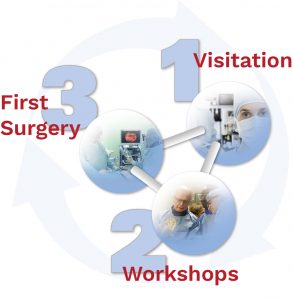
Workshop Calendars
Our Workshop Calendars offer a detailed overview of upcoming Workshops and Congresses.
Stay up-to-date on the next educational events about endoscopic spine surgery.
EVENT HIGHLIGHTS
In review of 2023 see following collages to EUROSPINE and NASS, the two major meetings of the year!
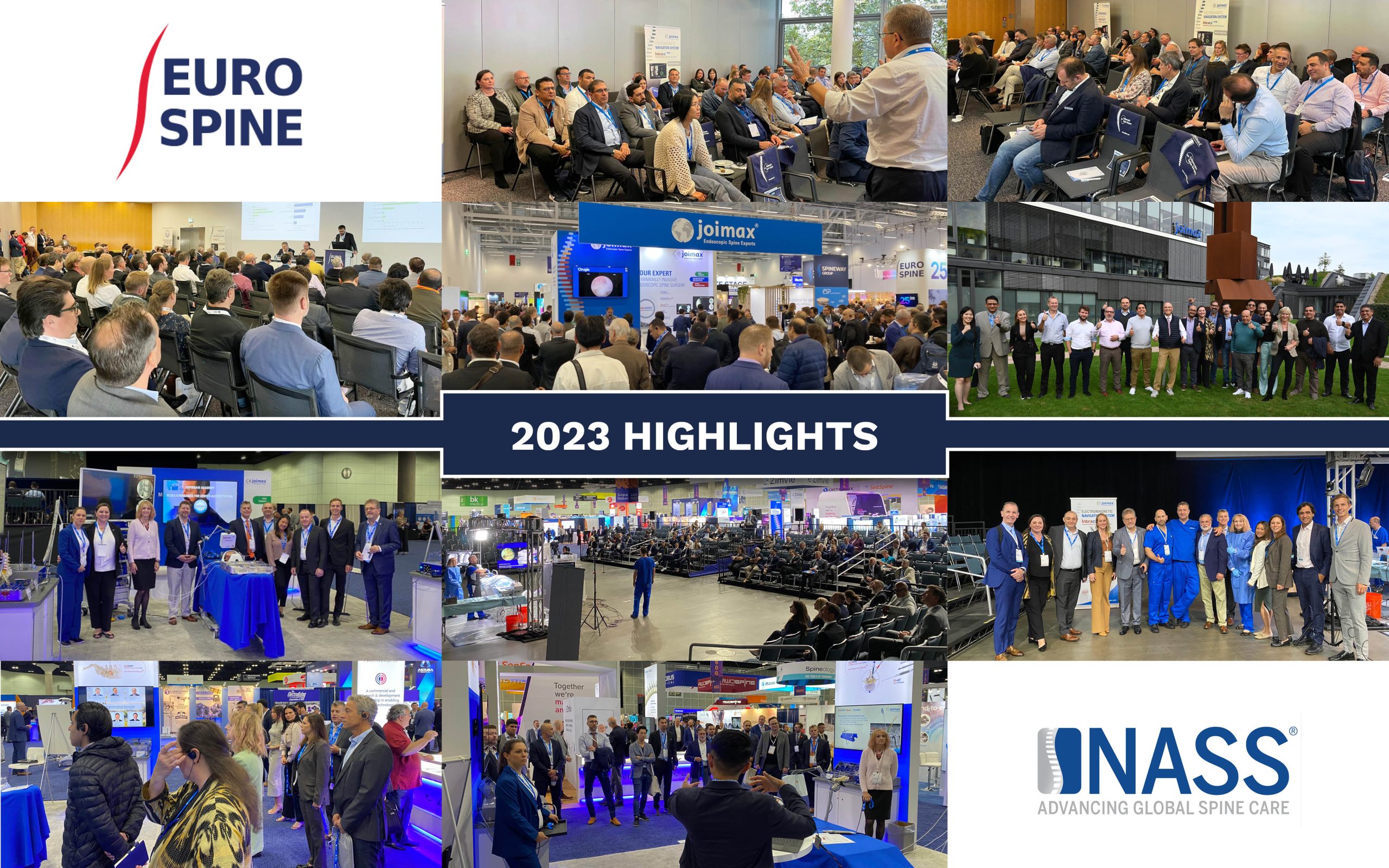
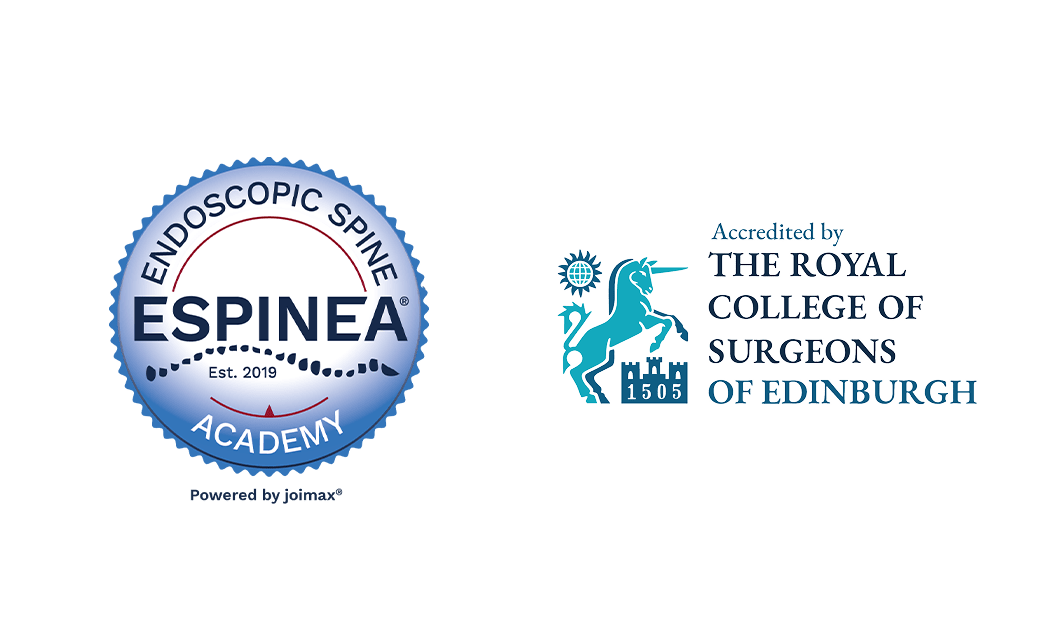
ESPINEA®
Amalienbadstraße 41, Raumfabrik 61
76227 Karlsruhe, Germany
Phone +49 (0) 721 255 14-0
Fax +49 (0) 721 255 14-920
E-Mail info@espinea.org
Net www.espinea.org
Responsible for content:
joimax® Clinical Research and
joimax® Marketing & Education
This newsletter is sent to you because your email address is on our subscribers list and we want to keep in touch with you as our customer, partner or interested party. If you are not interested in receiving more emails like this one, please click here to unsubscribe.
